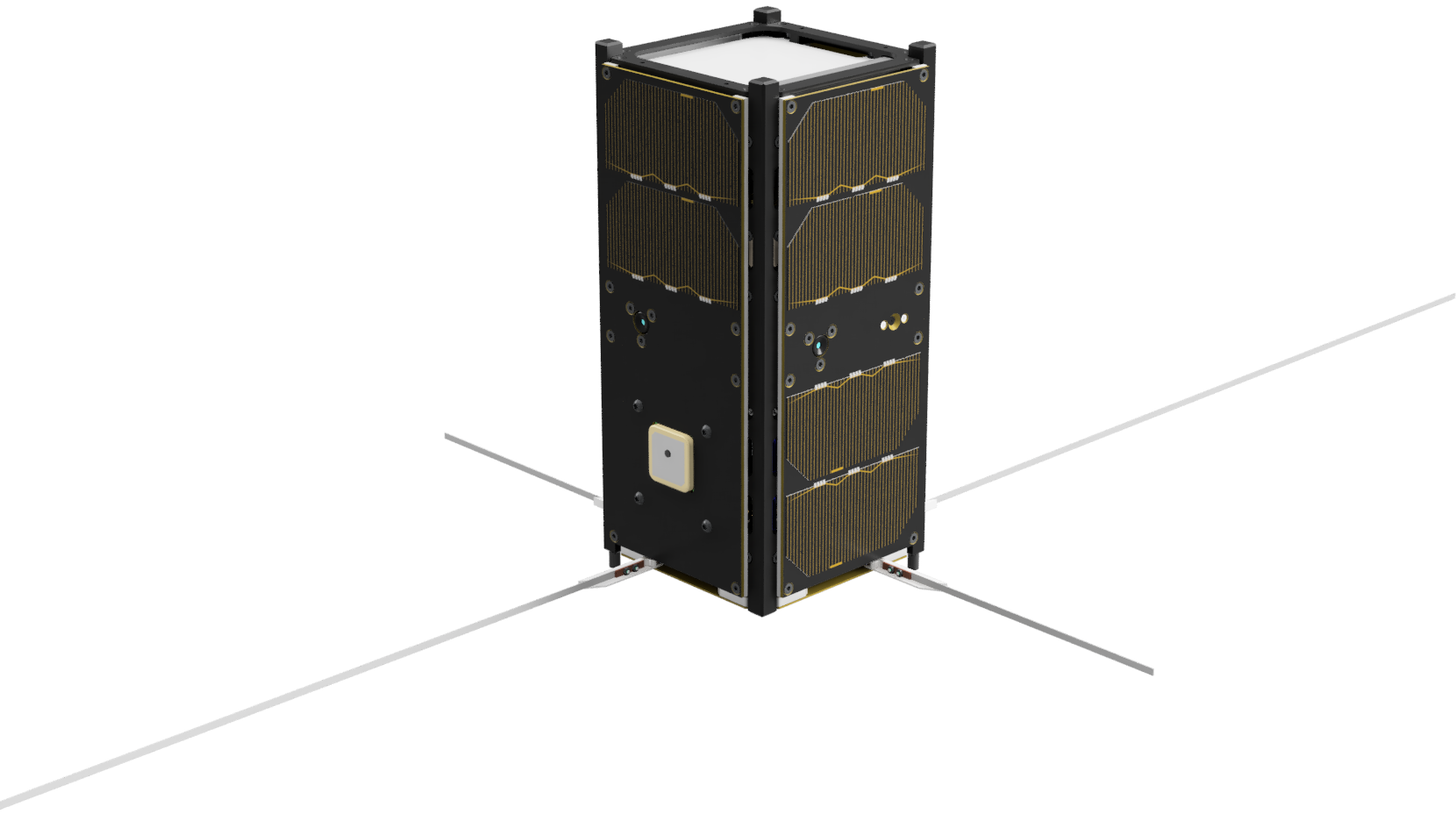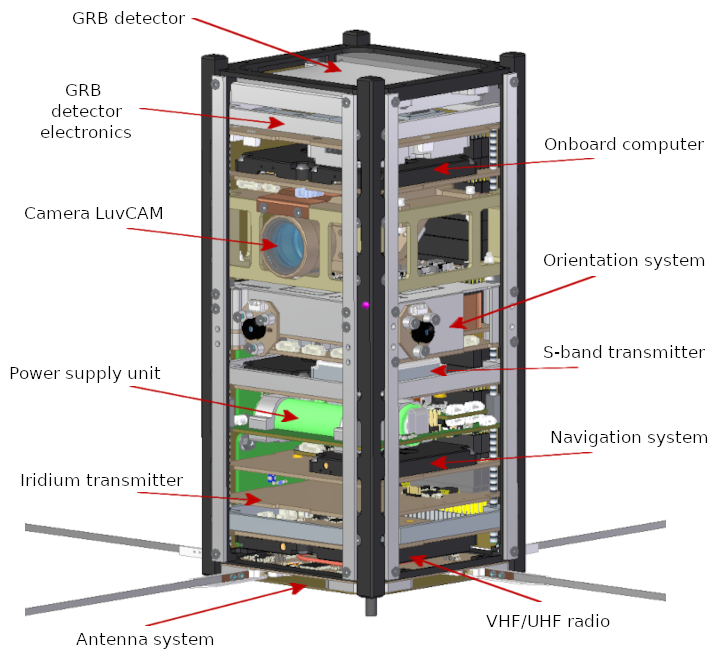GRBBeta and its Mission
GRBBeta is a technology demonstration mission whose main mission is to validate the technology for the future constellation of CAMELOT nanosatellites, which will be used to record and accurately locate gamma-ray bursts from space.
GRBBeta was created with the financial support of the Ministry of Education, Research, Development and Youth of the Slovak Republic. The project is carried out by the Technical University of Košice, Faculty of Aeronautics, and partners from various foreign institutions are collaborating on the project.
GRBBeta is a 2U CubeSat satellite. The dimensions of the satellite in the folded state (without deployed antennas) are 10 cm x 10 cm x 22.7 cm. The maximum mass of the satellite according to the standard for 2U is 2,66 kg.
The satellite contains the essential subsystems required for energy acquisition and storage, satellite orientation maintenance, communications, data storage and other necessary subsystems. The mission will also test some new subsystems. An advanced positioning module and a module for instant messaging over the Iridium satellite communications network. A pair of science facilities is also on board.
In addition to the science experiments, a digital converter will be available for radio amateurs to send messages via our satellite.
It is scheduled for launch on July 9, 2024. It will be carried into orbit by an ARIANE 6 rocket from the European Space Agency.
The supplier of the satellite platform is the Slovak company SPACEMANIC Ltd.





















